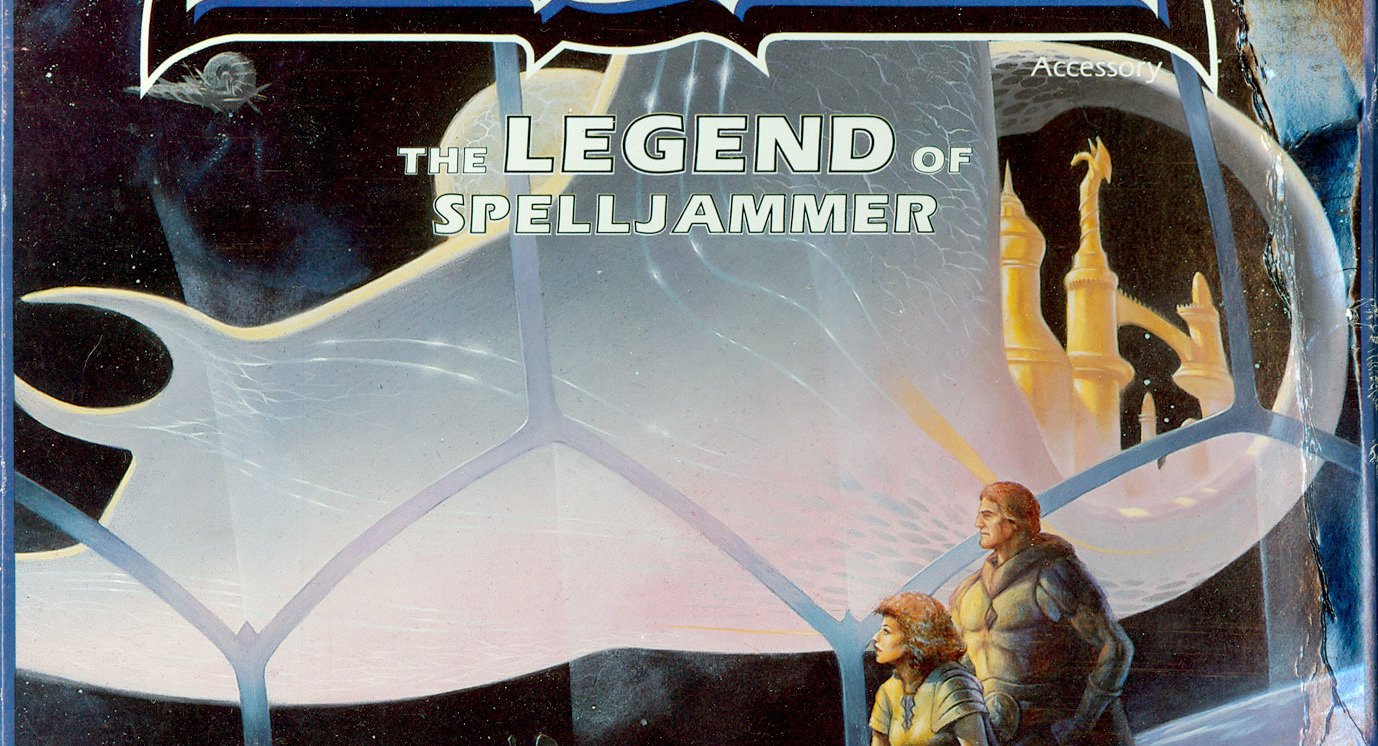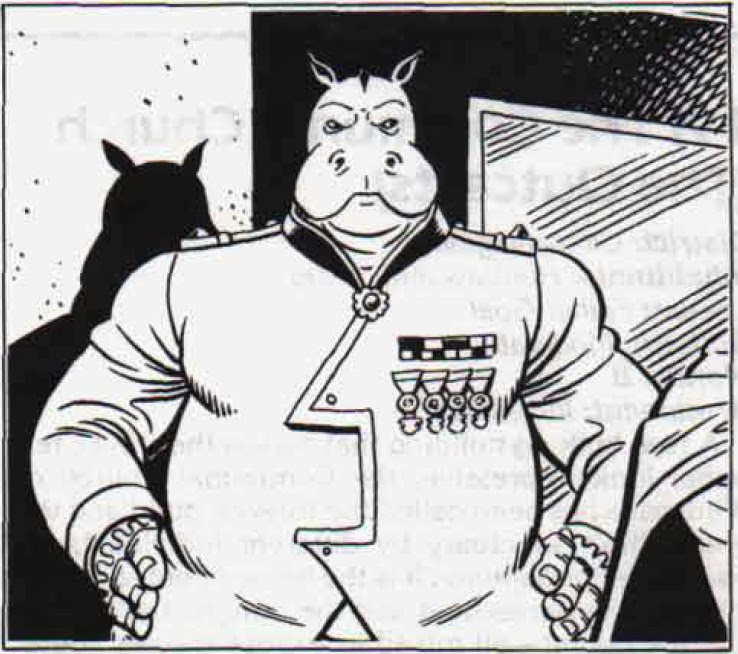D&D: The Legendary Spelljammer


It’s a setting! It’s a manta ray! It’s a ship! It’s the Spelljammer! The namesake of the setting, vanished into legend here once more.
“It is the mightiest ship of space overshadowing even majestic elven armadas and hulking dwarven citadels, larger than many groundling cities. It moves at speeds seemingly impossible for so huge a vessel, yet it maneuvers with the grace of ships one-tenth its size. It is overgrown with legends and the memories of a thousand races, and in its wake are the lives of entire planets.
It is the great ship Spelljammer. The Queen of Wildspace. The Holy Grail of the Phlogiston. Spelljammer with a Capital ‘S.'”
Join us as we sit, gazing in awe at the majestic shape, gracefully drifting through the phlogiston, and then desperately scramble to climb aboard the legendary Spelljammer.
It’s A Ship And A Setting
Though it is the namesake of the setting, The Spelljammer was shrouded in mystery for two years until The Legend of Spelljammer came out. Then it remained shrouded in mystery–with just enough detail to make it one worth prying into. This particular module (and subrealm?) exemplifies the strength of Spelljammer. At its best, it brought mythology to the cosmos and somehow managed to tie together a universe that had gods and clerics and fighters in plate fighting alongside monstrous wolf-spider-eel slavers who wield magical fire, and planetary adventures. With elements of planetary romance and high-seas adventure, Spelljammer did something that no other space setting I can think of did. Even Dragonstar, which is a literal D&D in space, doesn’t quite have the same, “fighting with a golden sword amidst a martian sunset,” vibe that Spelljammer carries.
At least when it’s working right. At other times, it can get a little goofy (I’m looking at you, Giant Space Hamsters), or can get too far into trying to explain things that are better left vague–or to the players to fill in. And all that is exemplified in Spelljammer. So since it is its own little realm and place of legend among the stars, and since it carries the power to change worlds with it, like a harbinger of fortune (good or ill) streaking through the cosmos, let’s take a look at what makes the Spelljammer tick.
The Legendary Spelljammer Is… What, Exactly?
To begin with, what is the Spelljammer? On the surface, it’s a massive ship that requires no crew. A ship that happens to be a giant sentient space manta ray, but a ship just the same. But get closer, and you’ll find that it’s more than that. It’s home to myriad creatures, including beholders, the Arcane, halflings, gnomes, minotaurs–denizens from throughout the monster manual. Even a lich. It’s got whole wards on it–including gardens that feed the people who live on it, guard towers, marketplaces, warehouses, food cartels, lakes–basically everything you need to play host to multiple societies fraught with internecine conflict.
The first thing that’s apparent from a distance is the bulk of the ship. It’s tail curls back like the stinger of a scorpion, its wings stretch out in the Phlogiston, marked with symmetrical flat surfaces. These are the landing decks. The primary deck is located on the top of the “head” of the ship–it’s where most people who come into contact with the Spelljammer land, and it’s where most people’s fates are sealed. Upon landing, any creature breathing the air (even those normally immune to charms) are subject to the subtle scents and spells of Spelljammer. People failing a cumulatively penalized saving throw vs. spells or be ensorcelled by the ship, charmed so that they can never directly harm the ship, or even think about escaping it.
But in the meantime, before falling victim to the subtle mind control of the massive living ship, visitors have a chance to wander the ship, encountering the local color. And most likely, on the landing deck, those are the Shivaks–bioengineered lifeforms created by the Spelljammer to maintain it. If you’ve played Mass Effect, and encountered the Keepers, you get the general idea.
The four white strips that mark Spelljammer’s wings are tertiary landing strips of a sort. They are runways used by the ship’s offspring, called Smalljammers. More on those in a minute.
From the landing deck, visitors/soon-to-be-inhabitants can enter the interior space of Spelljammer, the majority of which is taken up by the gardens. The gardens are a thing of wonder. Lined with the strange bone that is the internal material of Spelljammer, the gardens are the primary source of food and air for the inhabitants of the living ship.
They are lit by massive luminous cells that mimic perfectly the light of the sun and moon (of any world, apparently, since vampires and werewolves and other creatures affected by solar or lunar light are afflicted by that of the gardens*) and keep the plants growing. But the primary function of the gardens is to reproduce. When the Spelljammer acquires a new captain (more on that in a moment) it bonds with them, and uses their force of will to control the chaotic magical energies surrounding it and begin the process of creating its offspring–the smalljammers.
In addition to bearing a resemblance to their parent, Smalljammers are an important part in the legend of the Spelljammer. The Spelljammer most creatures will encounter is not the original Spelljammer. But it is also the Spelljammer. If the Spelljammer should be destroyed, then one of the Smalljammers begins to mature and eventually becomes the new Spelljammer. It then awaits a captain and crew and begins again the cycle of its life.
And the creation of Smalljammers is no small thing. Called “the dark times” by Spelljammer’s inhabitants, the gardens stop growing food and instead focus all their energies on growing special seeds that contain the nascent Smalljammers. In the meantime, the populace, who may or may not have a perfect understanding of the timeline of this process (or even that it is a process at all) is left to the food that is housed in the various stores of Spelljammer. Internecine conflicts abound.
Beyond the gardens is the massive citadel of Spelljammer. Here, the majority of the inhabitants reside. There are council chambers that function as its governmental building. The Captain’s Chambers are nestled within the network of towers. There are food stores, libraries, markets. Whole ecosystems of people and commerce thrive in Spelljammer. It’s enough that you could house an entire campaign just on the massive ship.
Players could be members of one of the various conclaves, and try to work out deals with the Goblin Alliance. Or they could be relegated to working below decks in the Shivak terminals. Or they could be servants/test subjects in the grand Academies.
Should Spelljammer be threatened, the party might have to convince the various factions to work together to try and fight off whoever is threatening it. Maybe they come across the enclave of the giff (everyone’s favorite space-faring, gun-loving hippomen), and have to get them to reveal their most jealously guarded secret, a quadruple-barreled cannon capable of shooting most things out of the sky. Or off of Spelljammer. Assuming it doesn’t blow itself up.
You may fire when *KABOOOOOM*
That’s the great thing about Spelljammer. In one boxed set, you get as much character as whole campaign worlds. There’s a “blind” beholder, who has been adopted by the halflings who live aboard Spelljammer. Unlike most beholders, he is friendly (for a beholder) and doesn’t condescend to everyone he meets. Most people believe this is because the halflings have taken the edge off of him, but, as the book points out:
“It appears that spending time with the halflings have softened Astor, but in reality he is recording every slight and insult for the eventual day of retribution against both his former comrades and all other nonbeholders.”
Also he’s faking most of his blindness to evade the wrath of the other beholders who live thereon. There’s an enclave of them, some of whom genuinely believe that the Spelljammer is obviously a work of perfection created by ancient beholders, and they have only to unlock its secrets and take their rightful place as rulers of the cosmos.
There’s a lich, Romar, called the Fool, who is the “villain” of the setting. He’s a cancer that gnaws at the heart of Spelljammer–a former captain who was driven mad by his bond with the Spelljammer–he realized the subtle sorceries it wove, and managed to escape the bonding through desperate, dire pacts with dark powers. However, these evil powers (probably deities, but who knows) were unable or unwilling to affect him while on Spelljammer, so even as he rebelled against the ship, he found no escape, save death.
So he became a lich, and has devoted his time ever since to schemes of Xanatosian complexity in their scope and reach, as he attempts to both escape and destroy Spelljammer, before he is consumed in a whirlwind of evil eager to claim his end of the bargain.
And that’s barely scratching the surface–but it’s part of what makes this setting work. It takes sci-fi ideas (like a living ship that shoots black holes Spheres of Annihilation from its tail) and gives them a classic fantasy interpretation that give it a unique character. It’s the only time I’ve seen a D&D setting come close to Planescape’s creativity and deftness at handling different kinds of stories.
So whether you’re playing in Spelljammer the setting, or Spelljammer the ship, you’re sure to find swashbuckling adventure on the high-stars.
All worlds are connected through Spelljammer, according to the setting.
*This begs the question, are vampires affected by any kind of sunlight? Like, what if you took one to Dark Sun, would they still burn? I’m going to go with probably, because it’s Dark Sun, and everything burns there, eventually.











